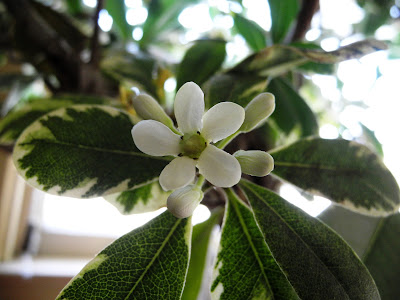Readers ask the strangest questions. Here's the question from MarkO:
Thanks for taking up the challenge, TPP! It's a complicated story, but I'll try to be succinct.
It involves a famous wave of UFO sightings in southern Michigan in March, 1966. Over the two nights in question, the 20th & 21st, in two different locations, dozens of sober, reliable witnesses saw what seemed to be car-sized objects swoop down from the sky and settle over swampy areas. No one got within 500 yards of the objects on either night, so descriptions of its size, shape and appearance are varied. But all witnesses described white, blue, red, yellow, green and silver lights that moved up and down and side-to-side, changed in intensity and vanished whenever any other light source was pointed at them.
The US Air Force expert who was called in to investigate the sightings, Northwestern University astronomy professor J. Allen Hynek, was rushed into making a premature assessment of the sightings and declared that the witnesses may have seen swamp gas. It made some sense to Hynek that decaying organic matter in the swamps, released by the spring thaw, could create pockets of luminescent floating gas...
This set off a national furor, and Hynek's verdict was resoundingly mocked and condemned.
No one has ever been able to prove that the lights were or were not swamp gas, but there is one significant clue that, to my knowledge, has never been considered.
The first night, the 20th, was clear and in the 40s. The second night, the 21st, was also in the 40s, but there were terrible thunderstorms across the region, and the mystery lights were spotted shortly after the rain stopped.
My question is this: would the heavy rain on the 21st have inhibited the release and combustion of swamp gas, or would there have been no difference between the dry conditions of the 20th and the rainy conditions of the 21st.
Seems to me that the rain factor would have made some difference, but I don't know!
Can you help?
Quite simply MarkO, TPP can't. Who the hell knows what happened out there? Here's what you can be pretty certain about, people saw something, or thought they did, and it wasn't from outer space. Swamp gas, methane, occurs when organic matter decomposes under anaerobic condtions, which are common at the bottoms of ponds and lakes during the winter. The only thing that may have mattered in this situation, is that distant lightening may have illuminated some low-lying swamp gas. Otherwise it's hard to think of any way the weather was a factor. Personally, it's always bothered me that people like Hynek never witnessed such things first ahnd, you know, a credible witness. Why was Hynek mocked? He offered a credible explanation, a skeptics explanation because lacking any evidence of anything else, you go with something that's at least possible, but these are not usually the answers people want. Maybe some readers have their own ideas.
 The North American Handmade Bicycle show would be fun to visit. The 2013 show just happened. As regular readers know, TPP has a thing for funky bikes and for funky stuff made from plant material, so it's no surprise he thinks it's doubly cool to have a funky bike mad from plant materials. Here's a look at the Calfee Design tandem "bamboo for two" bicycle (you can see more of the Calfee bikes at the link above). Man, you gonna turn some heads with this set of wheels. You might get chased down the road by some giant pandas. Start saving up your wooden nickels.
The North American Handmade Bicycle show would be fun to visit. The 2013 show just happened. As regular readers know, TPP has a thing for funky bikes and for funky stuff made from plant material, so it's no surprise he thinks it's doubly cool to have a funky bike mad from plant materials. Here's a look at the Calfee Design tandem "bamboo for two" bicycle (you can see more of the Calfee bikes at the link above). Man, you gonna turn some heads with this set of wheels. You might get chased down the road by some giant pandas. Start saving up your wooden nickels.


























